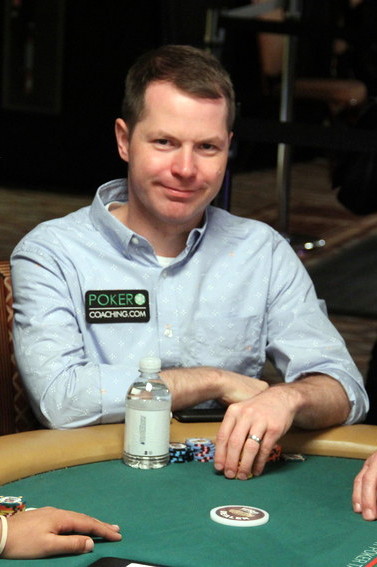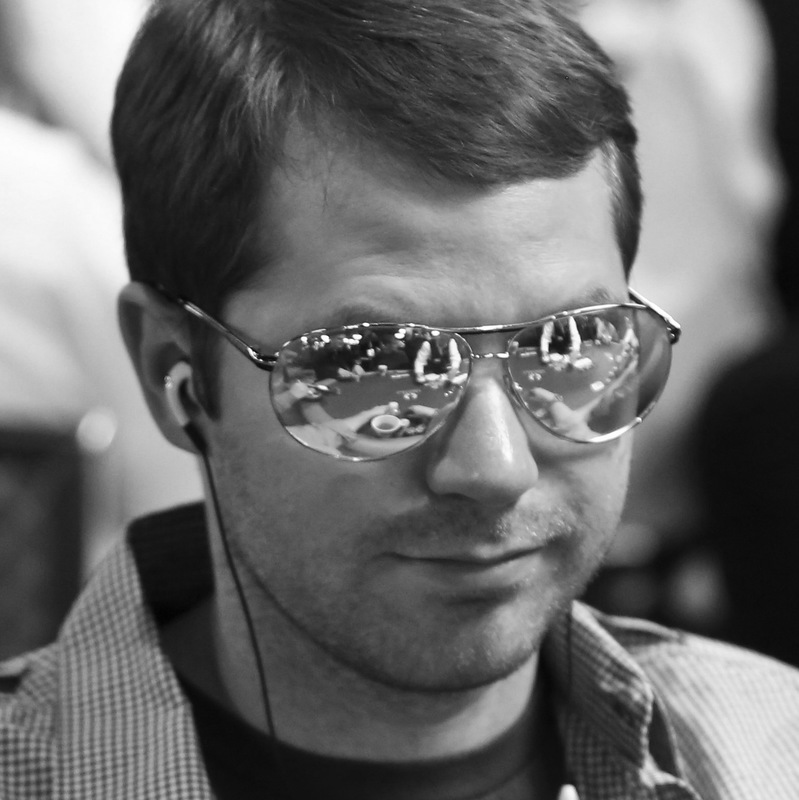






Do Not Fold Too Oftenby Jonathan Little | Published: Mar 11, 2020 |
|
|
Card Player Magazine, available in print and online, covers poker strategy, poker news, online and casino poker, and poker legislation. Sign up today for a digital subscription to access more than 800 magazine issues and get 26 new issues per year!
 Many small-stakes poker players assume their goal is to patiently wait for a premium hand and then jam their money into the pot. However, this is one of the most detrimental mistakes you can make.
Many small-stakes poker players assume their goal is to patiently wait for a premium hand and then jam their money into the pot. However, this is one of the most detrimental mistakes you can make.
While getting your money all-in with the best hand is important, by sitting around and waiting for a strong hand, you fold away small amounts of money when you fail to make a pair on the flop. To make matters even worse, when you make a reasonable hand, such as middle pair, you may end up folding by the river when your opponent makes multiple bets, resulting in you losing a medium-sized pot without even seeing the showdown.
Whenever you make a decision at the poker table, always consider the mathematical proposition that is being offered to you. You should consider not only your pot odds, but also the Minimum Defense Frequency, which is the percentage of time you need to either raise or call in order to not be exploitable by maniacal aggression.
For example, if the pot is $600 and your opponent bets $300, if he wins the pot more than 33 percent of the time, his bluffs immediately profit. To figure how often a total bluff needs to succeed, you take the bluff amount and divide it by the bluff amount plus the size of the pot.
So in this case, it would be $300/($300+$600) = 33 percent. In order to not be immediately exploitable, you need to defend at least 67 percent of the time (100 percent – 33 percent). That number is your Minimum Defense Frequency. While there are often times where you should defend less than the Minimum Defense Frequency, you should almost always defend at least somewhat close to it.
In order to figure out what 67 percent of your hand range looks like, spend time away from the poker table dissecting and analyzing your entire range. This is the exact opposite of what many players do. Instead, they speculate about how to play specific hands, like as A-K, or various types of hands, like flush draws. You should instead look at the big picture, not your specific holding, and consider how you should play each hand in your entire range.
I discuss range analysis thoroughly at my training site PokerCoaching.com, where you can get a completely free trial membership. If the idea of range analysis is foreign to you, going through the quizzes and challenge questions will get you up to speed, allowing you to think about and play poker at a high level.
For the most part, as the flop, turn, and river become less coordinated, you should defend with more holdings that are traditionally thought to be marginal or weak. Suppose someone raises from middle position and you call in the big blind. The flop comes 8-3-2 and your opponent bets 35 percent of the size of the pot. You simply cannot fold hands like K-9 or Q-J, even though they lose to all decent hands.
I understand king-high and queen-high are quite weak, but they will occasionally improve to strong top pairs and when they don’t, you may win unimproved if you get to the showdown or if you decide to bluff when the board gets scary. You should also consider check/raising on the flop with hands that are not quite good enough to call with but still have some equity, such as 10-9 and 6-4. This will put your opponent in a tough spot with most of his marginal and weak holdings.
When you face a larger bet size, you have to defend less often. For example, if the pot is $2,000 and your opponent makes a gigantic $6,000 bet, you only need to defend 25 percent of the time because his bluffs need to succeed 75 percent or the time, $6,000/($2,000+$6,000). Against large bets, you should play snuggly because your opponent is risking a lot to win a little. That said, you still have to stick around with most of your strong pairs and strong draws, assuming your opponent is known to use gigantic bet sizes on a regular basis (and not only with premium hands).
While it is vital that you at least consider the Minimum Defense Frequency against strong players and overly aggressive players, you may find that the players in your specific game play in an overly cautious manner. If you know from your experience playing with them that they only bet when they are confident, they are going to win the pot, you should continue nowhere near the Minimum Defense Frequency. If you know your opponent will bet the flop, turn and river with only three-of-a-kind or a better made hand and will rarely (or never) bluff, you should fold almost everything.
When you have a clear idea of the mistakes your opponents are likely to make, do not be afraid to drastically deviate from a fundamentally sound strategy to take advantage of them. The way to win substantial money from poker is to play with players who are worse than you, and then adjust your default strategy to take advantage of the flaws in their strategy.
That said, many players win from poker simply due to their opponents folding too often. If all you have to do to win is make a bet, poker becomes easy! When you face one of these overly aggressive players, instead of folding and playing directly into their strength, turn their aggression into their biggest weakness by calling down way more often than they expect you to, resulting in you catching their big bluffs and collecting their chips. ♠
 Jonathan Little is a professional poker player and best-selling poker author with over $7,000,000 in live tournament earnings. If you want to learn how to play fundamentally sound poker and increase your win rate, check out PokerCoaching.com. Click here to try PokerCoaching.com for free.
Jonathan Little is a professional poker player and best-selling poker author with over $7,000,000 in live tournament earnings. If you want to learn how to play fundamentally sound poker and increase your win rate, check out PokerCoaching.com. Click here to try PokerCoaching.com for free.
Features
The Inside Straight
Strategies & Analysis